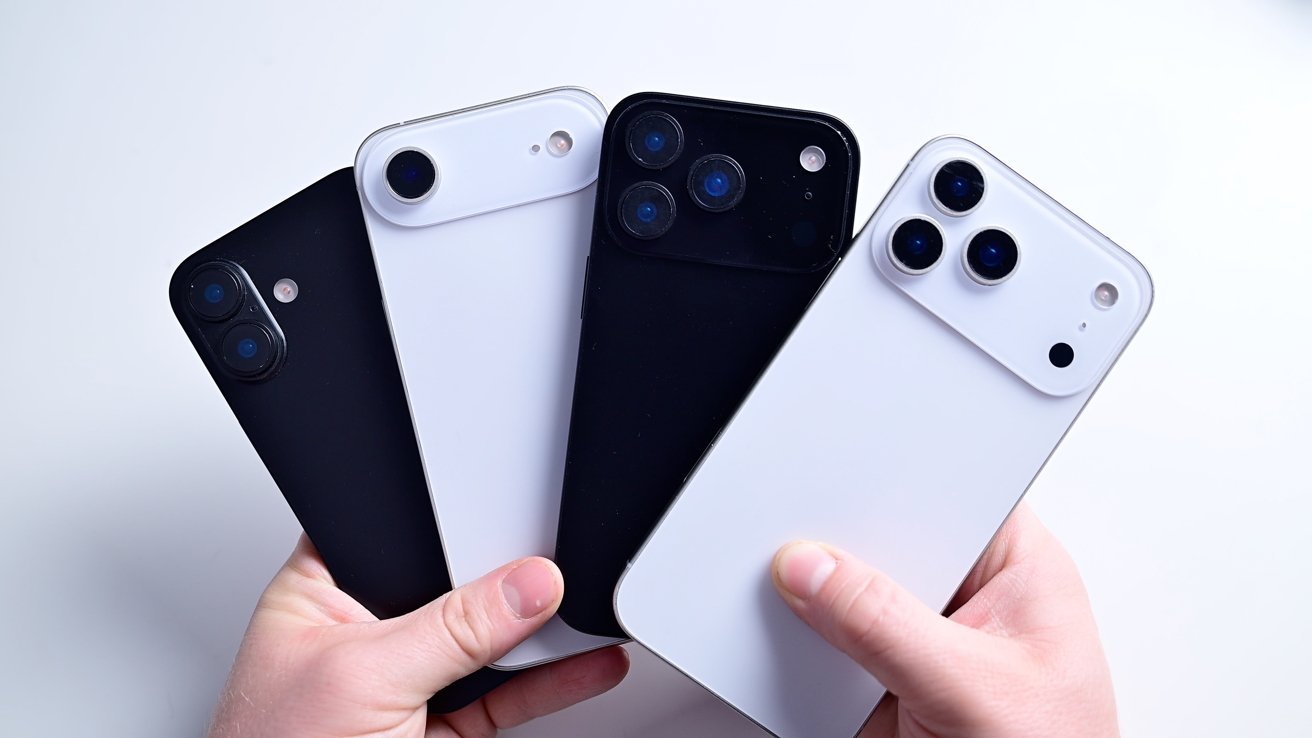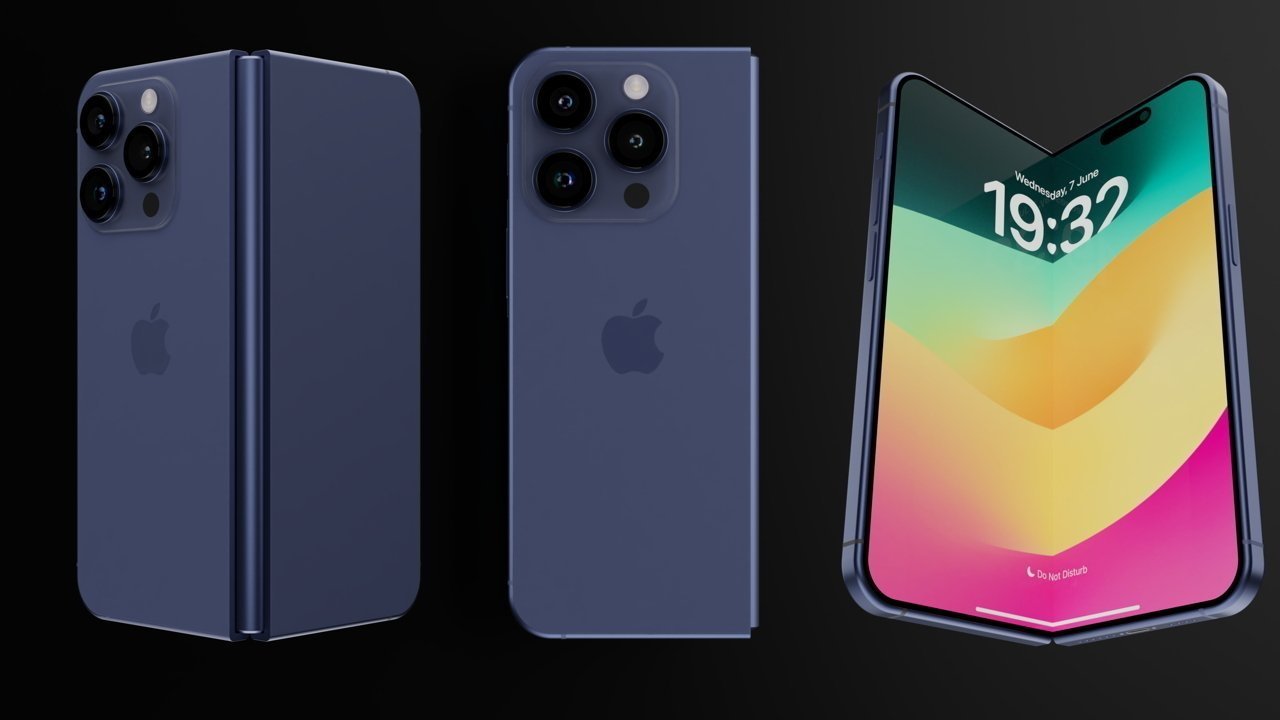Apple releasing six new iPhones in 2027 shouldn't be a surprise
The rumor mill is newly excited that there will be six iPhones in 2026, but, obviously, Apple's introduction of the new entry "e" model and the upcoming iPhone Fold plus four flagships, totals six.

All four of the rumored iPhone 17 models
There's a chance that Apple could shift its release schedule once it has more iPhone models on the market. One rumor even suggested the base iPhone could become a spring release, leaving the pro models for the fall.
The latest claim comes from Instant Digital, a source with a solid track record on Weibo, who suggests Apple will stagger the rollout of the iPhone 18 lineup across early 2027.
It will follow the late-2026 launch of the iPhone 18 Pro models and the long-awaited foldable iPhone. This isn't the first time we've heard Apple was moving toward a biannual iPhone launch strategy.
Analyst Ming-Chi Kuo said earlier in 2025 that Apple plans to split its release cadence. The iPhone Pro models will come in the fall, and non-Pro models will arrive the following spring.
Add in the company's foldable, which is widely expected to arrive in late 2026, and the math becomes simple. By early 2027, Apple would be in a position to roll out the iPhone 18 and iPhone 18e alongside the existing iPhone 18 Pro, iPhone 18 Pro Max, and the iPhone Fold.
The iPhone calendar is getting crowded
The more interesting angle is what this shift means for Apple's strategy. A spring iPhone launch isn't unusual for Apple thanks to the iPhone SE and iPhone 16e, but it could let the company treat the iPhone Pro and non-Pro models almost like separate lines.
That may help with supply chains and allow marketing to lean harder into the year-round upgrade cycle.

An early multi-view render of the iPhone Fold - Image Credit: AppleInsider
Still, the risk of fragmentation is real. With six new models coming in a single calendar year, Apple's clean fall-focused narrative could get harder to maintain. Buyers may feel stuck trying to guess which models are worth waiting for.
If the foldable is positioned as a premium experiment and the iPhone 18e becomes a true entry-level option, the spread might work. But Apple will have to be clear about where each model fits.
Otherwise, the shift could blur the iPhone's once-straightforward lineup into something a lot messier. However, it is a strategy that works for Apple's rival, Samsung, so it could work out in the long term.
Rumor Score: Likely
Read on AppleInsider

Comments
iPhone Fold
iPhone Pro Max
iPhone Pro
iPhone Air
iPhone
iPhone e
iPhone mini
Just continue to offer phones for the niches. They do this for Macs, with 8 models currently and rumors for a 9th!
Mac Pro
Mac Studio
Mac mini
iMac
Macbook Pro 16
Macbook Pro 14
Macbook Air 15
Macbook Air 13
And, a 10th could be a "Macbook Pro Max 18", a portable Mac Studio.
Will be interesting to see how Apple hides the camera bumps on the iPhone fold model. Probably will use what is in the iPhone 17 Air. Still, all these folding phones don't lie flat on a table, and they look ever more egregious as the main body gets thinner.
As for the other iPhone models, I predict that any iPhone with only one rear camera will end up selling poorly. Poor sales of iPhone 16e in India shows that even price-conscious markets will lean toward an older iPhone with multiple rear cameras versus the current entry level 16e model.
That's because Joe Consumer all over the world prioritizes these features: camera, display, battery.
better battery life
I can’t tell the difference on screen
Bummer.
Both the notion of more models and a scaled roll out.
It's a win-win on every level and competitors have been doing the same for ages. It works.
Marketing gets something to 'sell' all year round.
Manufacturing get it's load lightened.
Engineering gets some respite.
Logistics becomes more agile.
Consumers don't have to wait a full year for the 'latest' phones.
How they would go about it depends on higher management.
No 'Pro' models early in the year and 'Pro' models prior to Christmas is definitely an option.
Another is one full range in spring and another in autumn.
The strategic benefit to that is being able to release competitive flagships throughout the year and scale features between releases.
Currently Apple releases phones that are often trailing the competition on new features even at release and then they have to wait a full year for another shot and then the same thing happens all over again.
IMO, that is one of the main reasons Apple has constantly trailed in camera and battery/charging advances. That's setting aside folding phones for a moment.
It's also the main reason (but not the only one) why it's losing ground and competitiveness in China quarter after quarter and that is having a knock on effect with wearables etc.
Not having a car and folding phone simply exacerbate the problem.
There is a niche of buyers who will buy a small phone, just as there is a niche of buyers who will buy a $2000 folding display phone. I've said it before that iPhone mini had enough sales imo. It was on order 3 to 5 million unit sales. That is enough. The issue I think Apple is having was gross margins weren't as high as Apple wanted. This can be addressed easily enough if they want to bring this type of model back, as well as addressing battery.
A single camera isn't what most consumers want in a phone in 2025. If Apple is to expect any long-term success for the e-series, they will need to put in at least a second rear camera and ensure that the front-facing FaceTime/selfie camera is comparable to what's in the regular iPhone model.
Even the discontinued mini models (12 mini and 13 mini) had dual rear cameras.
My guess is that the sales curve was headed down. They probably sold fewer 13 minis than 12 minis and projected even fewer sales going forward. My guess is that Apple had a iPhone 14 mini in their labs but pulled the plug on the product line. Today it is unlikely there are any mini iPhone prototypes in Apple's labs.
The closest thing Apple has now is the SE models which is often older/cheap tech in an older iPhone chassis. Low sales volumes means higher component cost per unit because of weaker volume discounts. If the market isn't there, Apple can't demand better pricing from their component vendors.
In any case, if you are holding out for an iPhone mini my guess is you have purchased your last iPhone.
Note that Apple's competitors don't really offer smaller handsets (outside of niche markets in Asia) apart from the folding models.
An aside...I find the UW lens useless. if they're going to give me a second lens, I vastly prefer the tele.
And yes, I'm aware that I may be using my 12 mini for a long, long time. No reason for me to buy a phone I can't carry in my pocket.